The battle between Wix vs Shopify, two website builders that are popular with eCommerce users, has always been fierce.
Generally known, Wix is great with small companies, while in comparison, Shopify can deal with much bigger sales. Is this still right at the moment?
Keep reading to see how these two platforms perform in terms of:
- Pricing
- Ease of customization
- Themes & templates
- Shopify vs Wix eCommerce features
- POS
- Apps store
- SEO & Marketing
- Multilingual capabilities
- Platform capacity
- Loading speed
- Customer support
- Security
Wix vs Shopify – At A Closer Look
Overview
Shopify is a SaaS (software-as-a-service) eCommerce solution made specifically to help people establish online shops easily. With over 4.4 million live stores, it is one of the most popular shopping cart solutions in the world (source: BuiltWith).
(Don't miss our ultimate Shopify review article for thorough insights about Shopify and Shopify competitors.)
According to BuiltWith, Wix is a drag-and-drop website builder with more than 2.9 million live websites. Wix eCommerce brings many brand new and exciting features, from optimized shopping and payment experiences for customers to business and finance management tools.
(Don't forget that we have a thorough Wix eCommerce review for you to get all the information about Wix. Check it out to learn more about this popular Shopify competitor.)
My personal experience with both Wix vs Shopify
Okay, so I've built stores on both Wix and Shopify, and here's the deal:
Seriously, Wix was SO easy to get started with. The drag-and-drop feature, beautiful templates, you name it. I set up a lovely little store for my client to sell handmade jewelry in no time. However, as the shop expanded, I bumped into some limitations with Wix's inventory management and creating more complex sales funnels.
Now, Shopify has a steeper learning curve. It felt a lot more “behind the scenes” and less visual at first. But, let me tell you, the power this platform packs is impressive. Once I got the hang of it, I was able to scale the business way beyond what I could have done with Wix.
So, here's the bottom line, from my own experience:
- Wix is perfect for beginners, small stores, and anyone who wants a simple, visually appealing online shop.
- Shopify is the way to go if you're serious about eCommerce, planning to grow a large business, and need powerful features and integrations. This is for the big leagues.
Wix vs Shopify: 9+ Key Differences Need Considering
Feature | Wix | Shopify | Winner |
Pricing | Cheaper plans, limited features | More costly, robust features | Depends on need |
Easy usage | Drag-and-drop, visual editor | Structured editor, theme flexibility | Shopify (long-term) |
Themes/Templates | 900+ free, not changeable | 200+ paid/free, switchable | Wix |
eCommerce features | Basic tools, API integration | Advanced inventory, reports, apps | Wix |
POS | US/CA only, basic | Global, full-featured | Shopify |
App store | 800+ apps | 13,000+ apps | Shopify |
SEO/Marketing | Built-in tools, good SEO | More apps, decent SEO | Wix |
Multilingual abilities | 100+ languages, no multicurrency | 20 languages, 130+ currencies | Shopify |
Scalability/Limits | 100-page limit, product caps | Unlimited products/pages | Shopify |
Loading speed | Slower | 1.3s average | Shopify |
Customer support | Callback, videos | 24/7 live chat | Shopify |
Security | SSL, PCI DSS, DDoS protection | SSL, PCI DSS, SOC reports | Tie |
#1. Best for Pricing: Wix
Without looking at the price, the Wix pricing vs. Shopify comparison would be incomplete. Let’s see which one offers a better price.
Quick verdict
When it comes to comparing Wix vs. Shopify pricing, Wix seems to be more affordable for a new eCommerce website. However, Shopify will offer more robust eCommerce features to better suit eCommerce businesses of all sizes.
Shopify Pricing
Shopify has 4 main pricing tiers ranging from $19 to $2,300 per month.
- Basic Shopify ($25/month): With Basic Shopify, you get all the fundamental eCommerce functions. This plan is suitable for merchants who want to build a simple store or have just started a business.
- Shopify ($65/month): This plan has everything you need to grow your business. You can get all the features in the Basic plan plus professional sales report features, global selling support, etc.
- Advanced Shopify ($399/month): This plan offers all the advanced features. A medium-to-large business can grow fast, and Advanced Shopify makes the process even more possible.
Shopify Plus (from $2,300/month) is the highest subscription plan available. It grants greater access to Shopify resources and ultimate support and customization.
Wix pricing
On the other side of Wix vs Shopify pricing, Wix reveals four paid pricing plans that range between $17 and $159.
- Light ($17/month): This plan provides a basic marketing suite without eCommerce functions.
- Core ($29/month): You will have unlimited bandwidth along with a year of free domain, sales analytics, a professional logo, etc.
- Business ($36/month): This plan has every feature of the Core plan, yet with more storage and more robust eCommerce features. You will also get more deals, such as tax calculators, dropshipping, multiple currencies, and much more.
Business Elite ($159/month) is Wix's highest subscription plan. Store owners have all the features of the Business plan, along with priority support. All your questions on Wix’s answer page will appear at the front of the line, and all your phone calls will be answered as quickly as possible.
Besides, Wix also has a free plan with a Wix domain and an Enterprise solution for scaling your business agility.
Here's a brief comparison of Shopify vs Wix pricing :
- For entry level, Shopify Starter is significantly cheaper than Wix's entry-level paid plan, but it's more limited in features (focused on social selling).
- For basic eCommerce, Wix's Core plan is slightly cheaper than Shopify's Basic plan, offering comparable features for starting an online store.
- For scaling up, Shopify's higher-tier plans are generally more expensive than Wix's, yet Shopify has more robust features and scalability for growing businesses.
#2. Best for Ease of customization: Wix
User-friendliness is doubtlessly an integral factor that you should never overlook since you have to work with the system on a daily basis. Hence, an eCommerce platform that is easy to use will surely take the biscuit. Let's find out through a Wix vs Shopify comparison – which is easier to use?
Quick verdict
Based on our testing, Shopify vs Wix eCommerce, for user-friendliness, we find that Wix is slightly easier to use than Shopify.
Shopify ease of use
I would say that Shopify keeps the dashboard and editing system separate. Therefore, you will move back and forth between the preview and the back-end to check the result and the front-end interface.
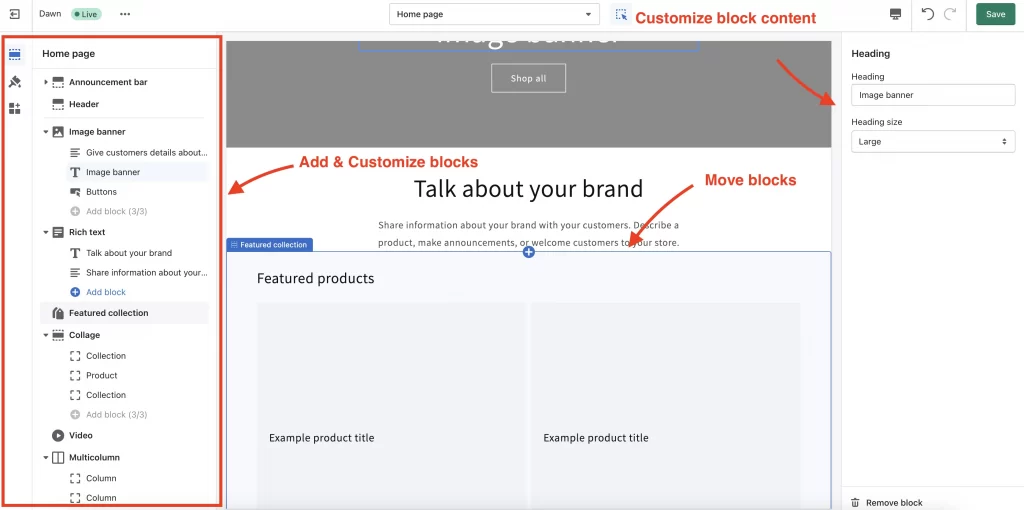
It may take you longer to arrange the site as perfectly as you wish. However, Shopify offers hundreds of beautiful themes for you to create and optimize your eye-catching storefront easily and professionally.
Especially, with Shopify, it's possible to change a theme without losing content. You only have to go through simple steps to change your Shopify theme style:
- Browse a theme on the Theme Store
- Click Customize. Click Theme Settings> Styles.
Just note that Shopify only has a few free options (which are still great!), so if you choose a premium theme, you may need to pay more.
Wix ease of use
Let’s dive into this: the ease of use of Wix’s business model is important. Once you have finished setting up your store, it's time to build a thriving Wix store without a hitch.
Based on my experience, Wix's drag-and-drop creator allows merchants to manage all content on the front-end interface by clicking on the feature (such as an image, title, logo, etc.) and dragging it anywhere they like. Apparently, it is extremely convenient and painless for users with no technical knowledge.

More than that, Wix also offers artificial intelligence technologies, called Wix ADI and Wix Editor, to help you with the very first steps of creating your online store.
However, Wix has one downside. You cannot switch to another Wix template while still maintaining your store data and design. If you wish to change to another template, you may need to:
- Pick a new Wix template
- Copy & import all data from the old template to the new one
- Transfer other additional features
- Most importantly, since Wix template features will be based on your plan, you need to transfer your Premium plan and domain to the new template
The process somehow makes your experience on Wix seem more complicated and daunting than using Shopify.
#3. Best for Themes & Templates: Wix
Both Shopify vs Wix platforms offer a wide selection of beautifully designed responsive templates and themes to meet the needs of any store owner. Now, let's compare!
Quick verdict
Between Shopify vs. Wix, Wix definitely wins in the number of website templates. However, Wix templates are not changeable, which can be annoying when you want to rebrand your store. On the other hand, Shopify themes are more tailored to the eCommerce shopping experience, which makes store-building easier.
Shopify themes
Shopify designs 200+ themes specialized for online stores. The price ranges from $140 to $450.
As expensive as it may seem, every paid theme is artistically and functionally cost-effective. Take a look at our favorite list of the best Shopify themes and best free Shopify themes.
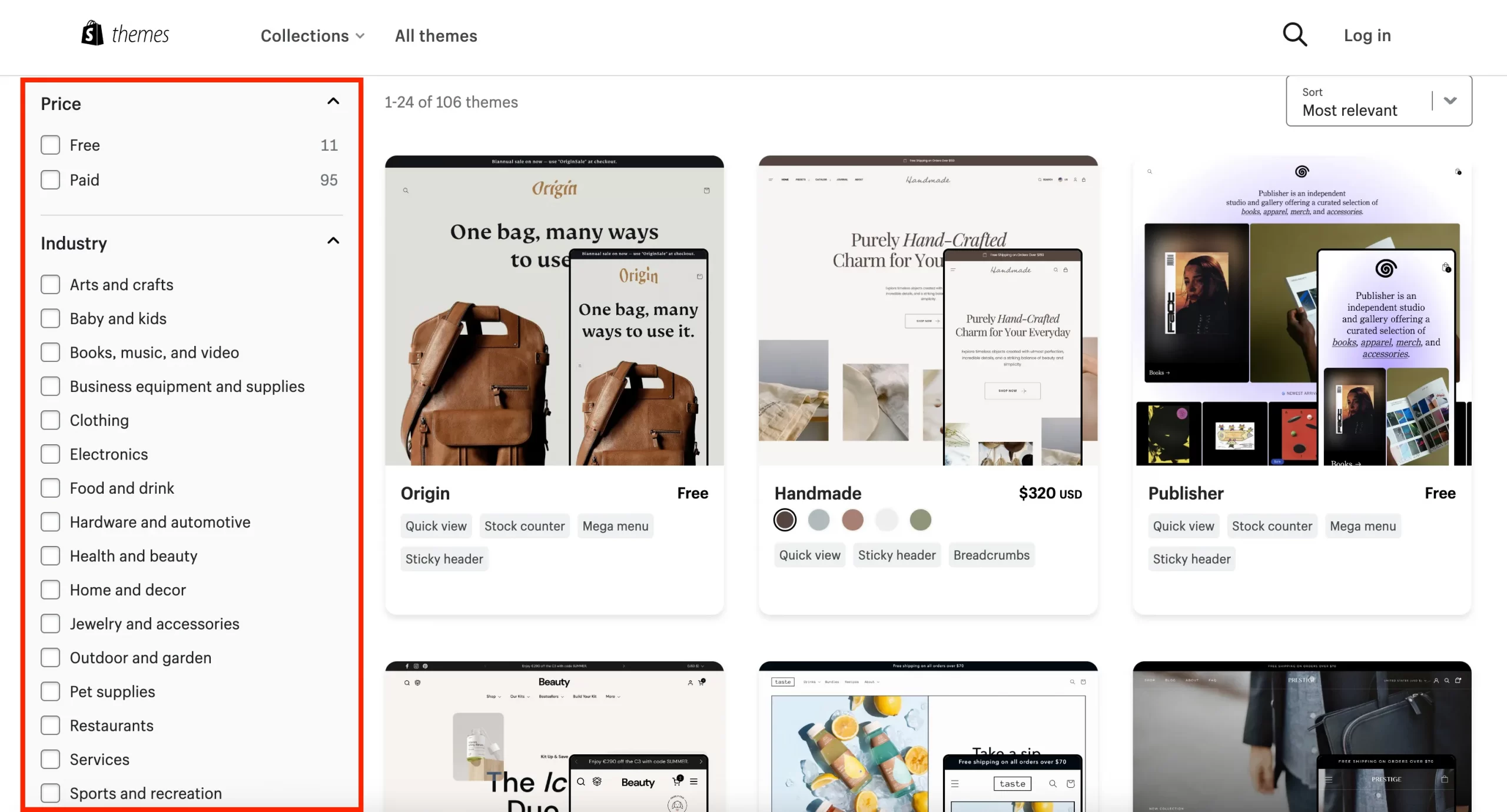
In case you want to add some elements, or maybe you have an idea for a new feature that you think would make your website look more stunning, Shopify Liquid is an effective way to modify the underlying code. Hence, you can have various designs that can be edited flexibly to suit your demands.
Wix templates
There are more than 900 free, appealing templates available for you to choose from on Wix. Those eye-catching templates cover different aspects and are easily modified for selling purposes.
Also, you can totally lift up your storefront to a higher level with Wix's own coding language: Wix Velo.
With this huge number of templates, you may find it hard to choose a dazzling one for your website; therefore, we have done research to list some of the best Wix templates for your incredible eStore.
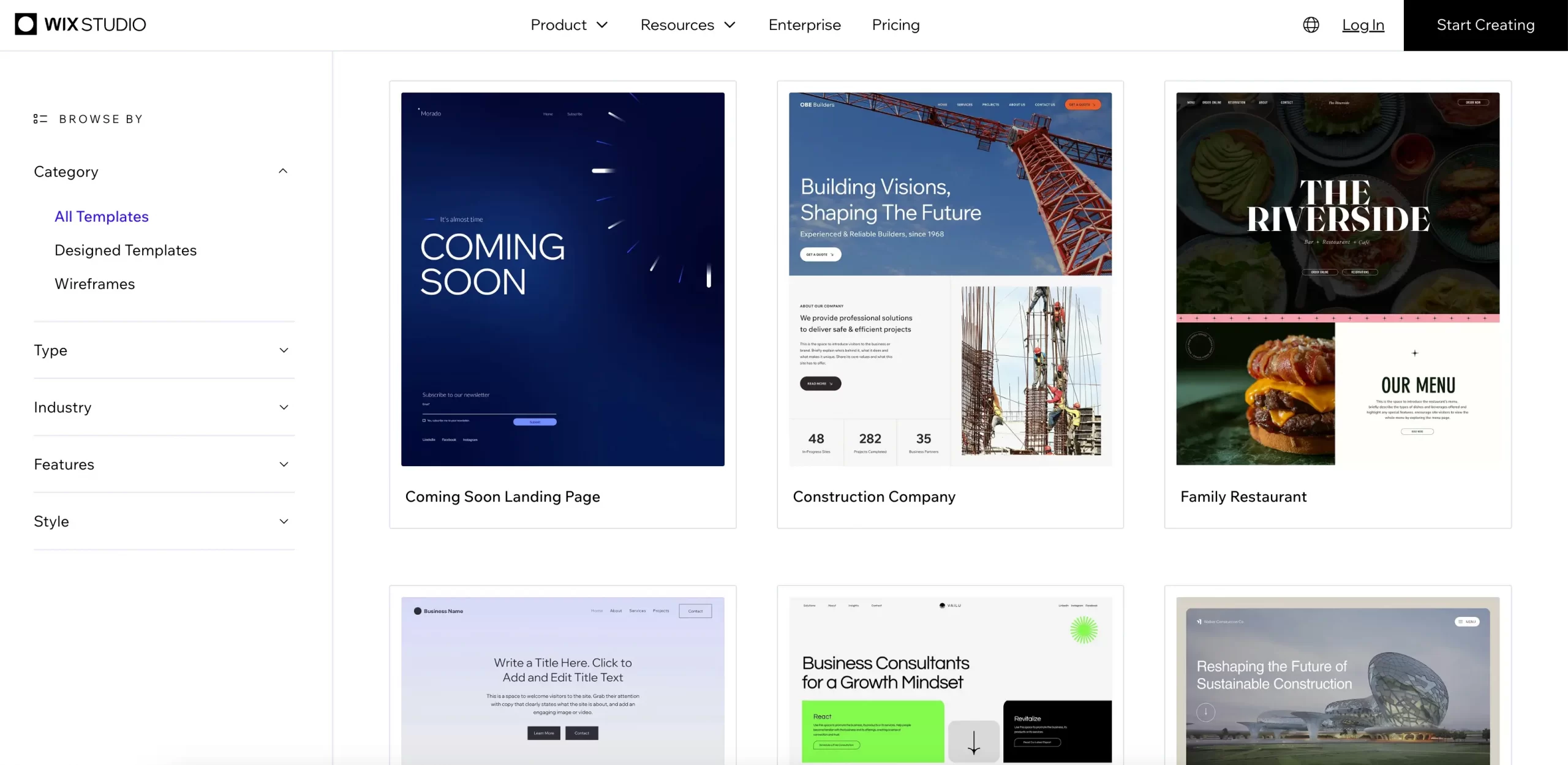
While Wix offers all of the templates at no cost, exclusive and premium features may go along with your website plan. What's more, you cannot change the Wix template, which somehow restricts your store's visuals. And, we find that this is a big drawback of Wix in this battle with Shopify.
#4. Best for eCommerce features: Shopify
One thing that can never be missed here is Wix vs Shopify eCommerce features. Below are the features we're gonna analyze in our breakdown of Shopify vs Wix for eCommerce:
- Inventory Management
- Report and Analytics
- Payment Methods
- Shipping Options
- Mobile App
Quick verdict
I can confidently say that Shopify is the best eCommerce solution and performs far better than Wix! But why? Let's review the Wix vs Shopify eCommerce tools below!
Inventory management
When using Shopify, I can track stock and get access to benefits like stock alerts, automated purchase orders, year-end inventory reporting, and user permissions and accounts. Shopify’s inventory tracking system gives me complete control and insight into the business.
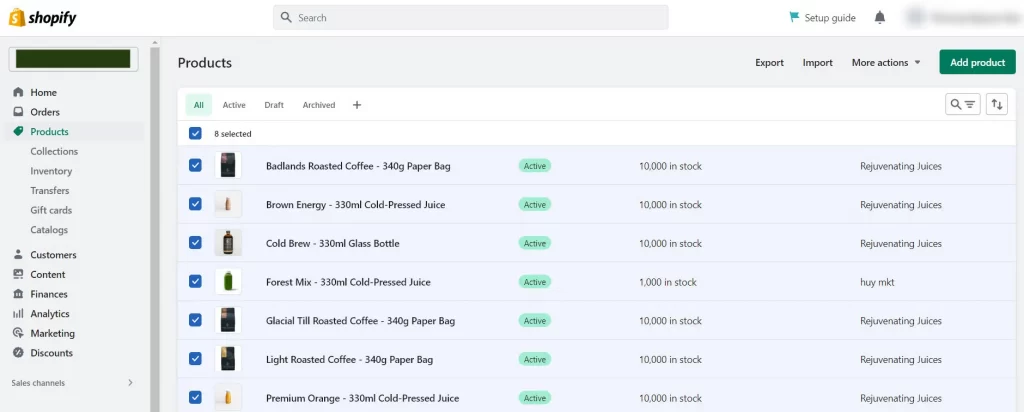
Notably, Shopify does have a variety of inventory apps and also the setup guidance for merchants to handle the task more easily.
With Wix, I can connect preferred inventory methods with the open APIs to my Wix store. Then, everything will be synced constantly and smoothly. Hence, I can both automatically track the number of certain products in stock and manually set the inventory status for each.
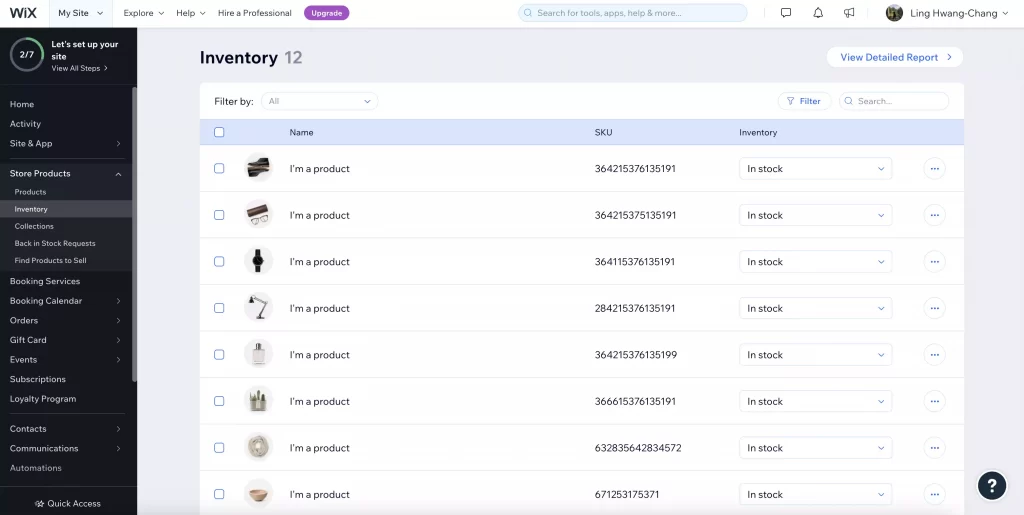
However, compared to Shopify, Wix lacks some of the native inventory management features. This might be frustrating for businesses looking for an all-in-one solution.
While Wix does allow integration with external inventory systems through APIs, it doesn't offer the same comprehensive inventory tracking, alerts, purchase orders, and reporting that Shopify does. I can see how this could pose challenges for businesses.
Report & Analytics
Shopify offers many reporting features that can be upgraded to higher plans. Further upgrades for Advanced Shopify or Shopify Plus can provide deep analysis with the help of filters in addition to the basic analysis from Basic Shopify.
Overall, Shopify’s analytics and reports give merchants the means to review a store’s recent activity, get insight into their visitors, analyze store speed, or even analyze a store’s transactions.
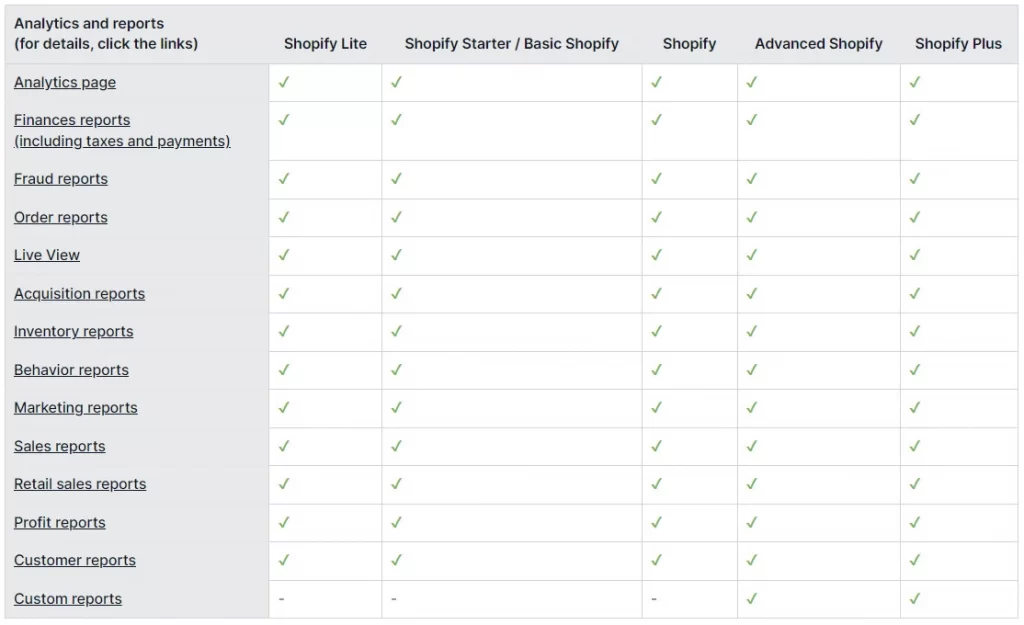
Note: You can only filter and edit all the reports except for the Finance reports. Also, in case you want to filter a custom report based on tags, the Shopify App Store will help you with reporting apps.
Wix, on the other hand, allows you to adjust your business reports in terms of website traffic, revenue breakdowns, customer shopping behaviors, or conversion rate. You can choose how to view your data, customize your reports to focus on data that interests you, and create new reports from scratch.
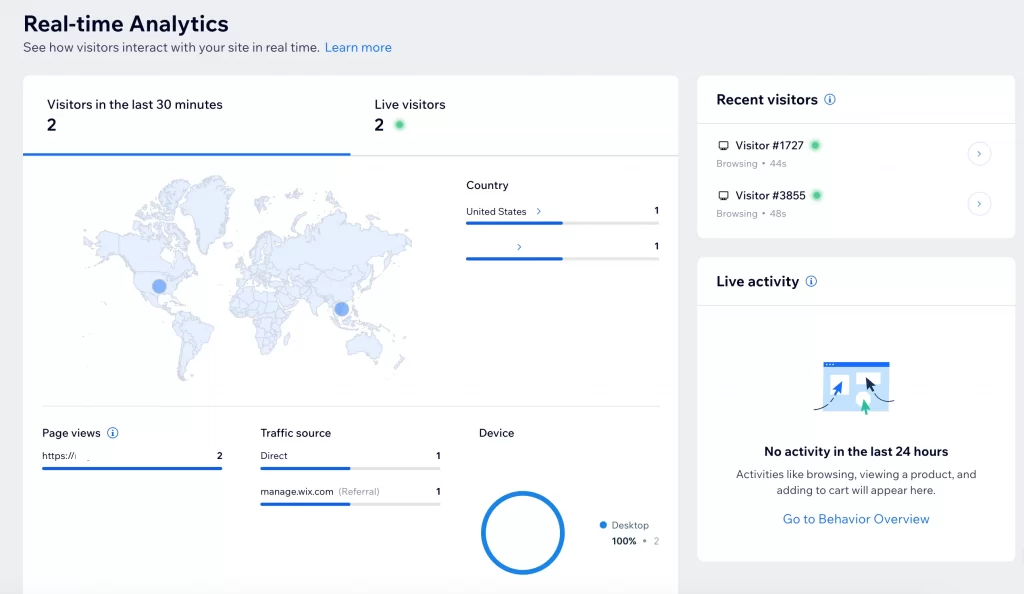
Yet, Wix falls behind Shopify in terms of the depth of its built-in analytics features, especially for higher-tier plans. Wix has basic analytics, while Shopify offers more advanced features like custom report building and detailed insights on aspects like store speed, which are crucial for business growth.
Payment methods
At the same time, Shopify offers its own payment solution, Shopify Payments (you can read the full Shopify Payments review here). This solution helps merchants avoid transaction fees.
Shopify Payments also offers various features, including fraud analysis, chargeback protection, and multi-currency support. However, it isn't available in all countries, and while you avoid transaction fees, you'll still pay credit card processing fees, which vary depending on your plan.

Shopify still charges different credit card rates for each plan when using Shopify Payments. If you use other payment processors, including Stripe, 2Checkout, PayPal, Authorize, etc., Shopify will charge you an additional transaction fee (2.5% to 0.5% depending on your plan).
Talking about Wix…
Wix supports all the traditional payment processors, including PayPal, Stripe, and Square, with advanced online encryption and the strictest standards.
Additionally, Wix offers “Buy now, pay later” solutions to give customers financial freedom. Businesses can use Wix to offer pay-later options to their customers with no additional integration costs.
The platform offers its native Wix Payments solution for processing payments. Depending on availability, this can be used locally and internationally.
Shipping options
Shopify is by your side with all steps in the complicated shipping cycle, from free shipping to coordination with alternative shipping providers. You can configure your shipping rates (free shipping, flat rate, depending on region, etc).
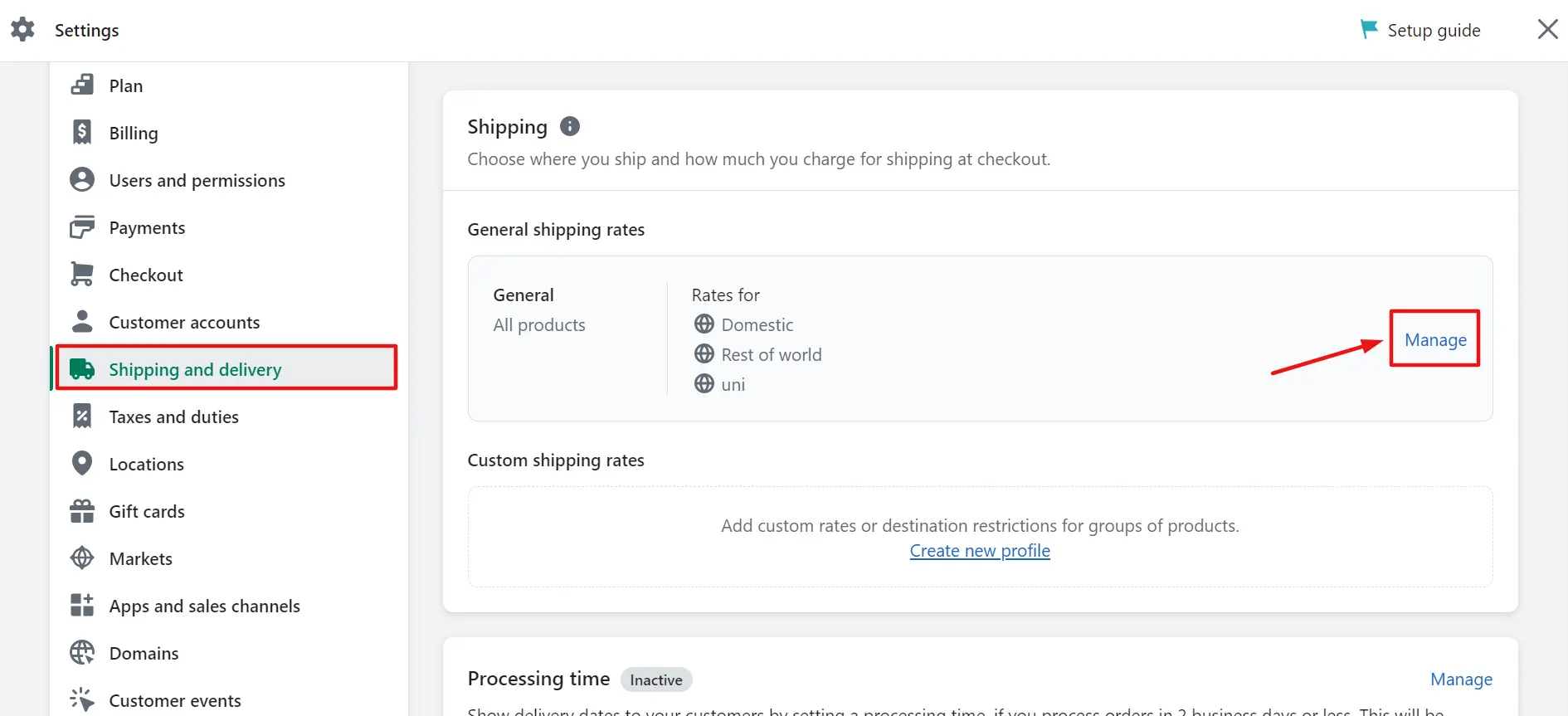
With the Advanced Shopify plan, you can also unlock the third-party calculated shipping rates so that you can show customers the current courier prices at checkout. In short, when you organize shipping with Shopify, you’re never left stranded.
On the contrary, Wix shipping features allow merchants to deliver products both locally and globally. With domestic shipments, you can apply standard local shipping rates and carrier integrations. On the cart pages, you can also offer standard or priority international shipping options.
However, for international orders, you need to assess actual shipping costs, such as cross-border fees, tariffs, and taxes, before setting prices. In addition, Wix does not offer printable shipping labels when you track orders and set tax rules for each product unless your business is based in Canada, France, Germany, Spain, the UK, or the US.
#5. Best for POS: Shopify
You should take point-of-sales (POS) solutions more seriously to maximize sales by running both cyber-based and brick-and-mortar stores. Scroll down to discover the comparison of Wix vs. Shopify POS support.
Quick verdict
While both Shopify POS and Wix POS provide good solutions for retailers, I believe Shopify POS delivers the best omnichannel selling experience out of the box!
Shopify POS
Shopify has an unrivaled reputation for POS worldwide. The POS solution is available on any pricing plan except Shopify Starter.
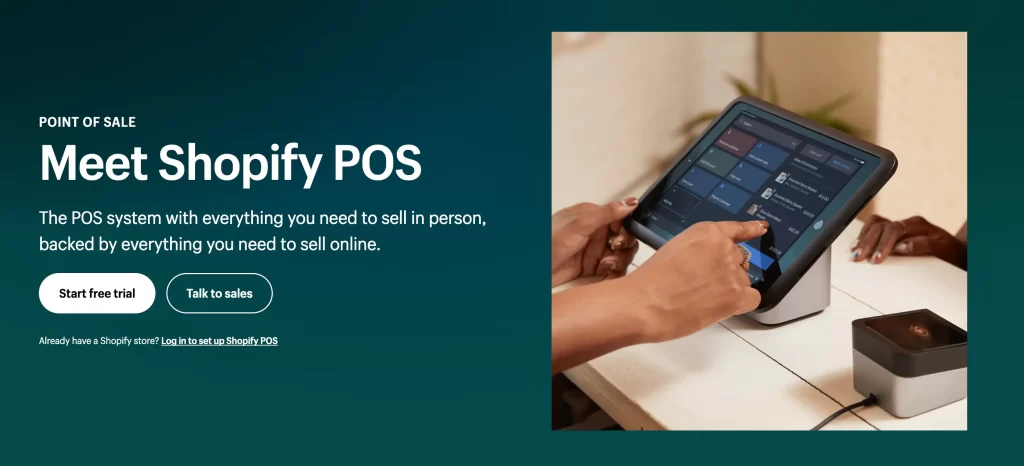
Here are some advantages you may get with Shopify POS
- Countertop, mobile, and multi-store POS systems available
- Accepts major credit cards, PayPal, etc., through Shopify Payments
- Includes POS hardware, software, reporting, inventory management, etc.
Discover the features and pricing for the Shopify POS system now.
Wix POS
Meanwhile, Wix also offers its own Wix POS system; however, POS is not Wix's strong suit. Here are some basic POS features of Wix:
- Mobile and POS systems
- Integrates with Wix Payments
- Accepts major credit cards through Wix Payments
- Includes POS software and optional hardware purchase

However, Wix POS is available for Canada or US-based merchants. As a result, most Wix users have to set up POS integration instead of leveraging Wix POS.
However, if your store is based in the US or Canada and in the Bookings/Events field, I think that Wix POS can truly satisfy your in-person selling needs. The platform itself supports a strong suite for booking and appointments.
#6. Best for Apps store: Shopify
Wix and Shopify both have app stores that provide many free and paid apps to support eCommerce in all regions. Below, let's compare these two eCommerce platforms.
Quick verdict
The Shopify app store really surpasses the Wix app market with more than 13,000 Shopify apps. This means you can utilize even more features when using Shopify!
Shopify apps
App Store of Shopify, with its diversity in function, allows you to grow your store to a bigger scope. With a total of 13,000+ apps (including third-party applications), I can find almost everything for selling online, like no-code file uploading apps and those for sending customized push notifications.
With a great variety of choices, Shopify divides these apps into 12 categories and nine collections to help users find their suitable apps more easily.
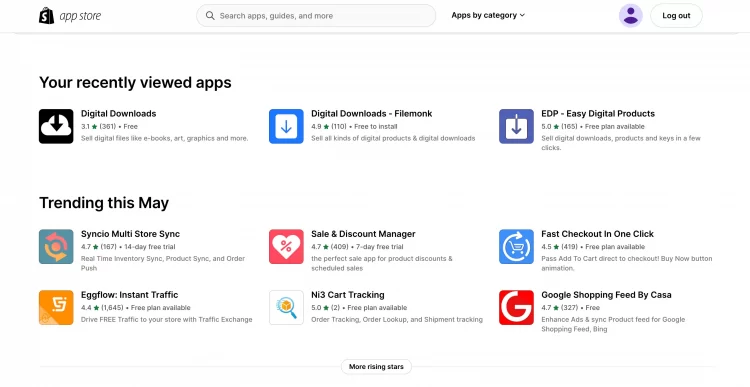
My personal take is that you can import customers and orders to Shopify with EZ Importer, start dropshipping with Dsers, and add product reviews with Loox – and that’s just the beginning of many great apps you haven’t discovered yet!
Here is a list of free Shopify apps for a brand-new website you can't miss.
Wix apps
When compared with Shopify, Wix slightly falls behind with over 800 apps and add-ons, which include six main categories: marketing, selling online, services and events, media and content, design elements, and communication.
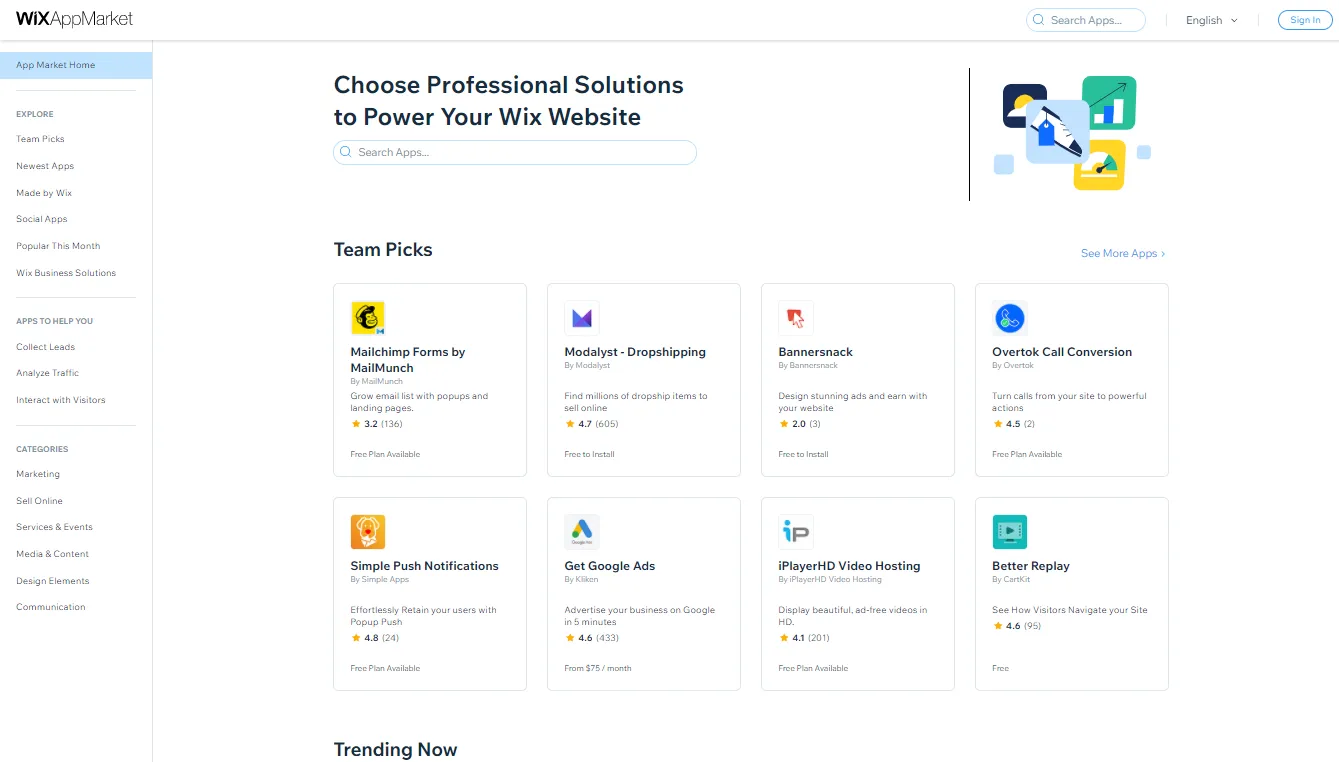
The top Wix business solutions, like Wix Stores, Bookings, Events, etc., have free basic features but charge additional monthly fees for premium upgrades and functionality.
#7. Best for SEO & Marketing: Wix
As an all-in-one marketing solution, Wix is available as a separate subscription that allows you to easily manage marketing campaigns in one place. Meanwhile, Shopify relies on marketing software from third parties. While this gives you plenty of versatility, it’s difficult to compare the two platforms fairly with so many apps floating around.
That's why we will break it down into 3 main categories and give an honest Wix vs Shopify to you:
- Email Marketing
- SEO Features
- CMS Features
Quick verdict
When it comes to Wix eCommerce vs Shopify marketing comparison, Wix is slightly edging over Shopify.
Email Marketing
There's a built-in email tool in Shopify to promote your products and share updates. You can choose from different email templates. Emails are definitely editable so that you can add a personal touch.
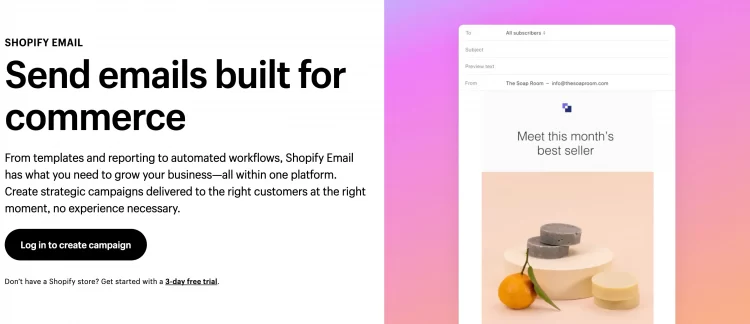
Within your admin panel, you can process every step, including reports of a campaign, to see how effective your plan is.
In this comparison, Wix brings you high-quality email marketing.
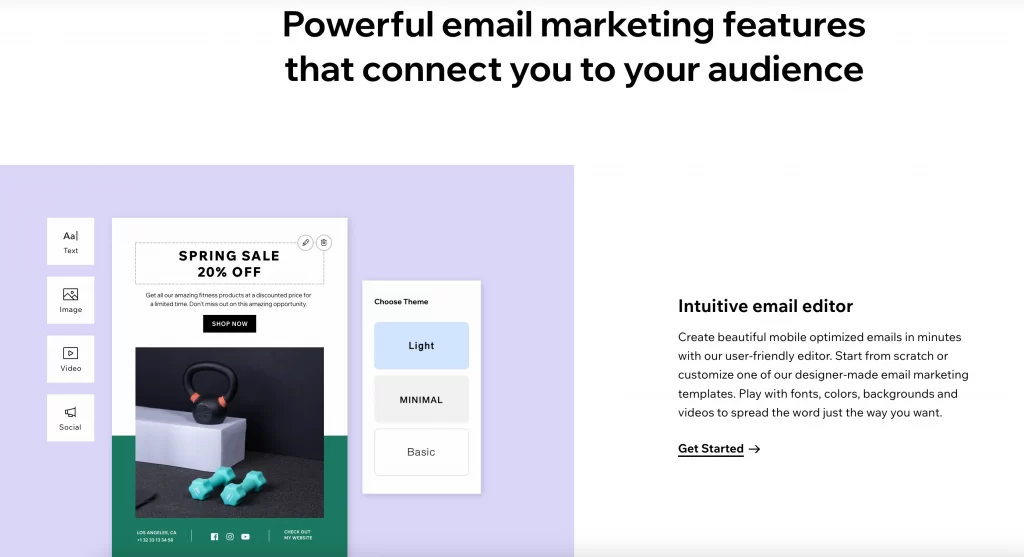
You can choose from a bunch of email templates. In addition, you can even create your own template from scratch to send to your customers.
SEO features
When it comes to SEO comparison, we find that Shopify is quite effective and adequate and can help you rank well when utilized properly. Plus, the theme you are using for your online website will have social media linking and sharing options to make it easier to market your site.
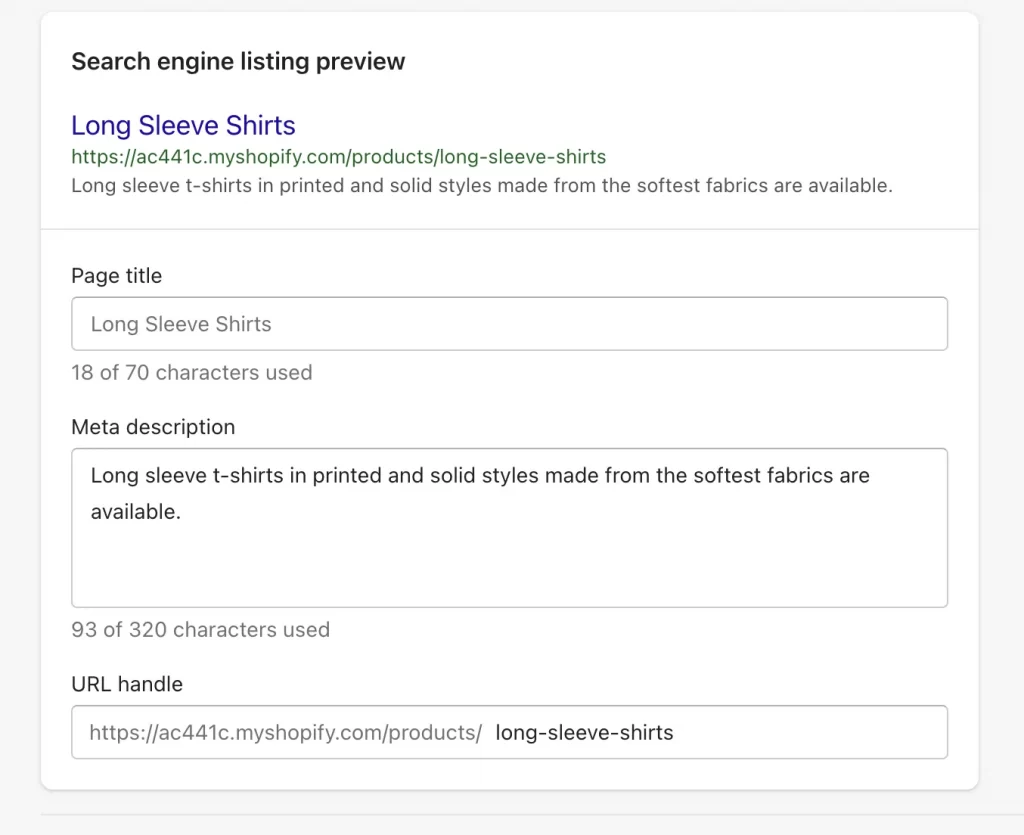
There are still areas for improvement. Some URLs are not SEO-friendly, like ‘/products/' for product pages and ‘/posts/' for posts. Also, Shopify SEO is frustrating because the Robots.txt file and Sitemap cannot be modified.
Don’t forget that Shopify also offers many Shopify SEO apps to help you gain more traffic.
In comparison, Wix is proud to have a great set of SEO built into every Wix Site. After adjusting SEO features from time to time, this platform can now effectively optimize your SEO workflow. All Wix sites are backed by a solid infrastructure that meets the needs of search engines, giving you a strong SEO foundation to compete in organic search.
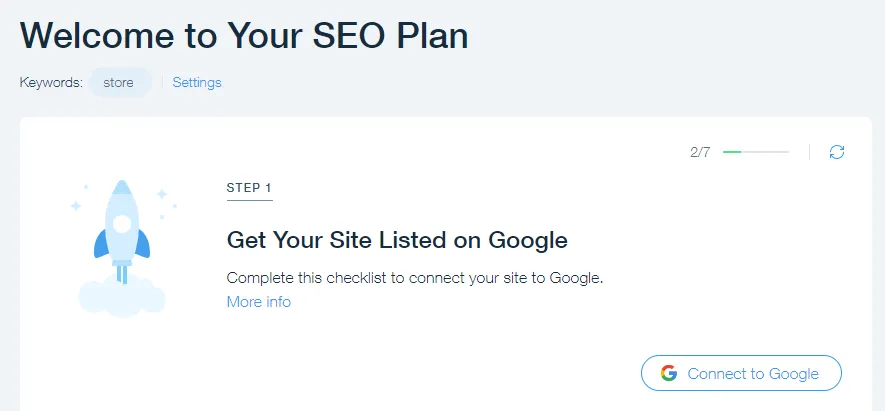
Additionally, merchants will have more freedom and flexibility in customizing their meta tags, URL slugs, canonical tags, structured data, and more.
CMS features
Content marketing is undoubtedly an effective approach for long-term results. With this cost-effective strategy, merchants should focus on producing ebooks, webinars, tutorial videos, and, of course, blog posts. Let's take a closer look at the comparison of how Wix vs Shopify handles blogging and CMS.
Although Shopify has blogging features, it only provides some essential functionality for writing posts. Therefore, the features you may miss the most include blogging analytics, social bookmarking, and searching. Basically, its blogging features are quite bleak if you are used to CMS, such as WordPress.
Wix allows you to build gorgeous blogs easily. The only hindrance it stumbles over is archive functionality, which saves old posts for users to read. If you really want to experience this unique function, you’re better off using a blogging-specific tool like WordPress.
#8. Best for Multilingual capabilities: Shopify
To increase orders and visitors and drive more sales, you must reach more customers, even overseas ones. Therefore, the comparison of Wix vs. Shopify's multilingual capabilities is significant.
- Languages
- MultiCurrencies
- Tax Calculation
Quick verdict
Shopify slightly surpasses Wix in this round.
Languages
Every Shopify standard plan, except for Shopify Starter, comes with the option of multilanguage selling. With Basic, Advanced, and Shopify, you can display your site in up to 5 different languages on separate URLs, while Shopify Plus supports up to 20 languages.
You can seamlessly add the translation to Shopify by importing CSV files or deploying a third-party app to translate the site.
In comparison, with Wix, adding additional languages becomes easier than ever. Besides, this website builder supports over 100 languages, which makes your localization journey the most pleasant experience.
All you need to:
- Add Wix Multilingual, an advanced app to translate your site.
- Switch the site to the secondary language.
- Translate the content on the site.
- Translate all the apps.
- Turn the translation to visible mode.
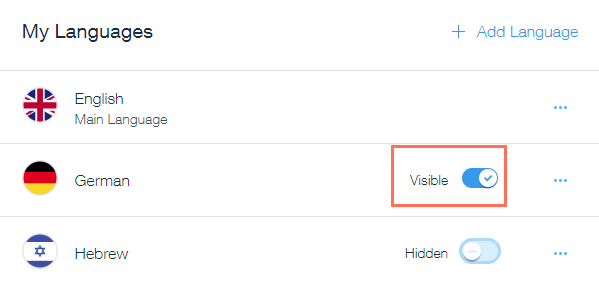
Multicurrency
First of all, you have to set up Shopify Payment to enable multicurrency functions. After that, the currency collector must be added to your current theme.
Please bear in mind that the number of helpful functionalities used to customize the international pricing model depends on your Shopify pricing plan.
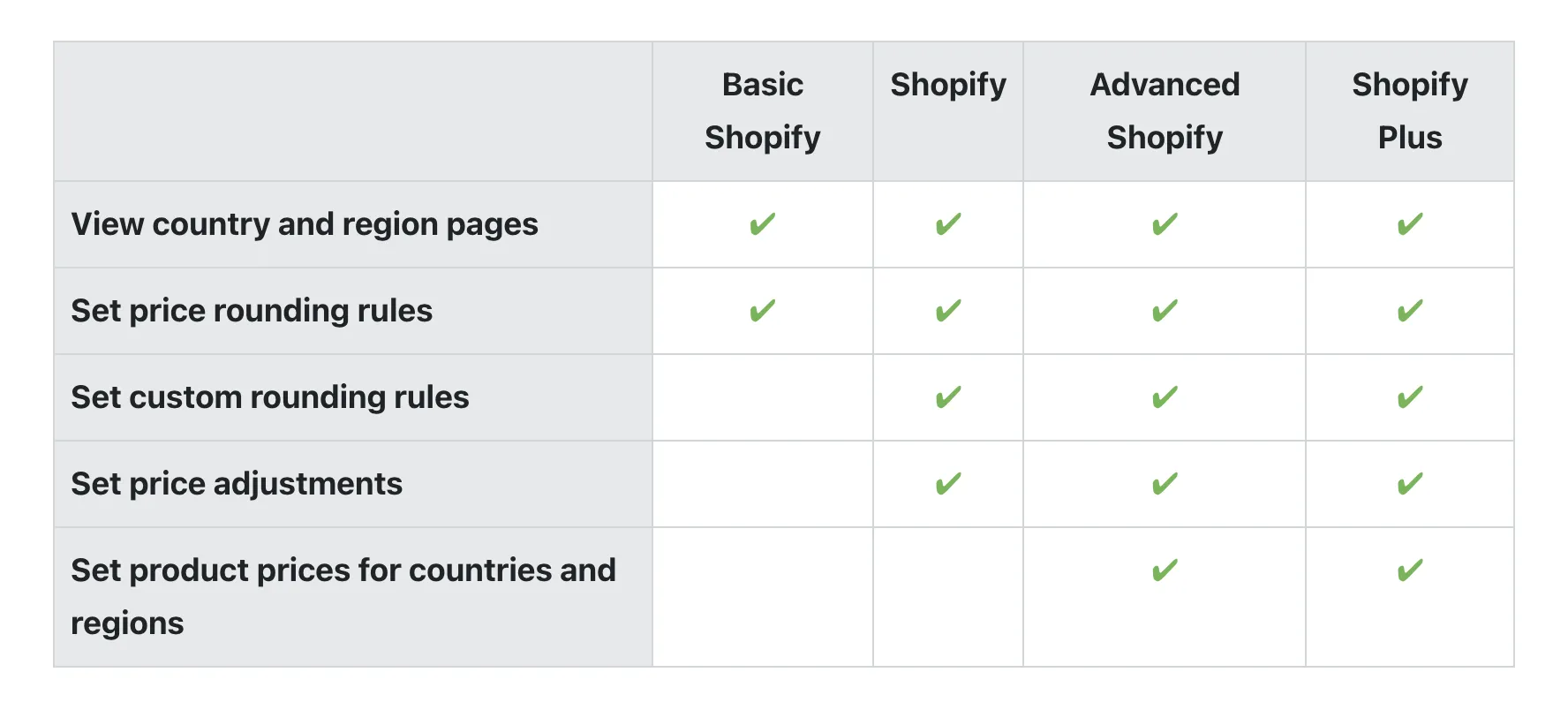
Shopify proves to be the winner with the list of 130+ supported currencies throughout the globe.
In comparison, it's a bit of a pity that you now cannot offer your items with multiple currencies on a Wix website. Yet, you can still display prices in multiple currencies on your Wix store.
Tax calculation
As you would expect, Shopify gives you extensive control over your settings. Shopify uses many default sales tax rates, which are updated regularly. You can set up Shopify to automatically handle common tax calculations to free up valuable time.
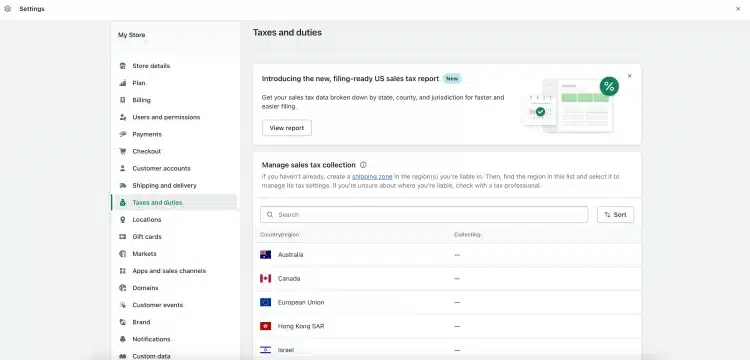
Just to let you know, Shopify won't handle your sales taxes for you. You might have to register your business with your local or federal tax authority to take care of your sales tax. Luckily, Shopify has got plenty of tax documents to help you out with setting up your tax requirements:
- General set-up steps and tax reports
- Location-based tax setting
- Registration-based tax settings
- Setting up tax rates for Shopify POS
Wix helps you to enable and disable taxes, including commodity rates, taxes, and more. It would be great if you use Avalara, an integrated software program that can help measure tax rates in real time.
#9. Best for Platform capacity: Shopify
While assessing the Wix vs Shopify competition, I know you want to understand any limitations before committing. Let me share what I've found about page, product, and API limits from each.
Quick verdict
I'm sure robust scaling without arbitrary handcuffs will be a top criterion as you choose the platform powering your vision so that Shopify wins this round!
Shopify capacity
Shopify embraces the elasticity you likely demand. Standard stores get unlimited scaling from the start. Your inventory grows as your business does without arbitrary caps. The lone limit is 1,000 new variants daily once reaching 50,000 total variants (though Shopify has plans to upgrade to 2,000 in the near future).
Even better, Shopify Plus subscribers enjoy something exceptional – complete freedom without any boundaries – which is better than many Shopify competitors like Wix, Squarespace, etc.
Wix capacity
In contrast, the biggest constraint is the strict 100-page limit for a Wix site. This could cramp your style if you deal in vast catalogs or elaborate hubs. However, their dynamic page feature lets you dynamically generate unlimited content as needed. Still, it may not compare to true CMS flexibility.
Wix Stores enforces defined ceilings across products, variants, and options. While 50,000 products seem sizable, these hard caps could eventually constrain your vision as businesses expand. Exceeding thresholds also brings undesirable errors. So, I highly recommend you be aware of your projected growth when you go for Wix.
#10. Best for Loading speed: Shopify
Data proves that the ideal loading speed for a site should be under 3 seconds to avoid website abandonment (source: Google). Let's take a closer look at the Wix vs. Shopify loading speed comparison.
Quick verdict
In this comparison, Shopify is slightly over Wix with a faster loading speed!
Shopify page speed
In my estimation, in terms of performance, Shopify is one of the best Wix alternatives. It’s the second-fastest platform that is usually tested.
Mobile load speeds are fast, which helps keep customers’ attention where they want it: on your website.
According to the Darren performance test, Shopify loads in an average of 1.3 seconds! In this battle, Shopify is obviously over Wix when it comes to loading time, which is crucial to success with any website, especially an eCommerce.
Wix page speed
However, there’s always a way out for Wix. To improve your site’s structure and performance, Wix also has specific guidelines to optimize the homepage and elements such as text, animation, and images.
If you follow Wix’s suggestions for site loading time, your website will be able to maintain 85% to 90% speed. In addition, you can check out Wix’s best practices to improve your site’s performance.
Therefore, in case you want to transfer your data to Shopify, check out how easy it is to move from Wix to Shopify with LitExtension.
Need Help to Migrate Your Store from Wix to Shopify?
LitExtension Automated Migration Tool transfers products, customers, and orders
from Wix to Shopify—fast, accurate, and hassle-free.

#11. Best for Customer support: A tie
Speaking of the support provided comparison, help centers of both Shopify and Wix are always kept up-to-date for you to search for information. You can get assistance from users and experts all over the world by joining their huge forums.
Quick verdict
Both Wix vs Shopify offer excellent support for their users.
Shopify support
The Shopify support team is always there for you 24/7 through email and phone. One thing that is superior is that Shopify offers live chat. Once your waiting time is down to the least and the issue is resolved quickly, certainly, your website will soon become a cash cow.
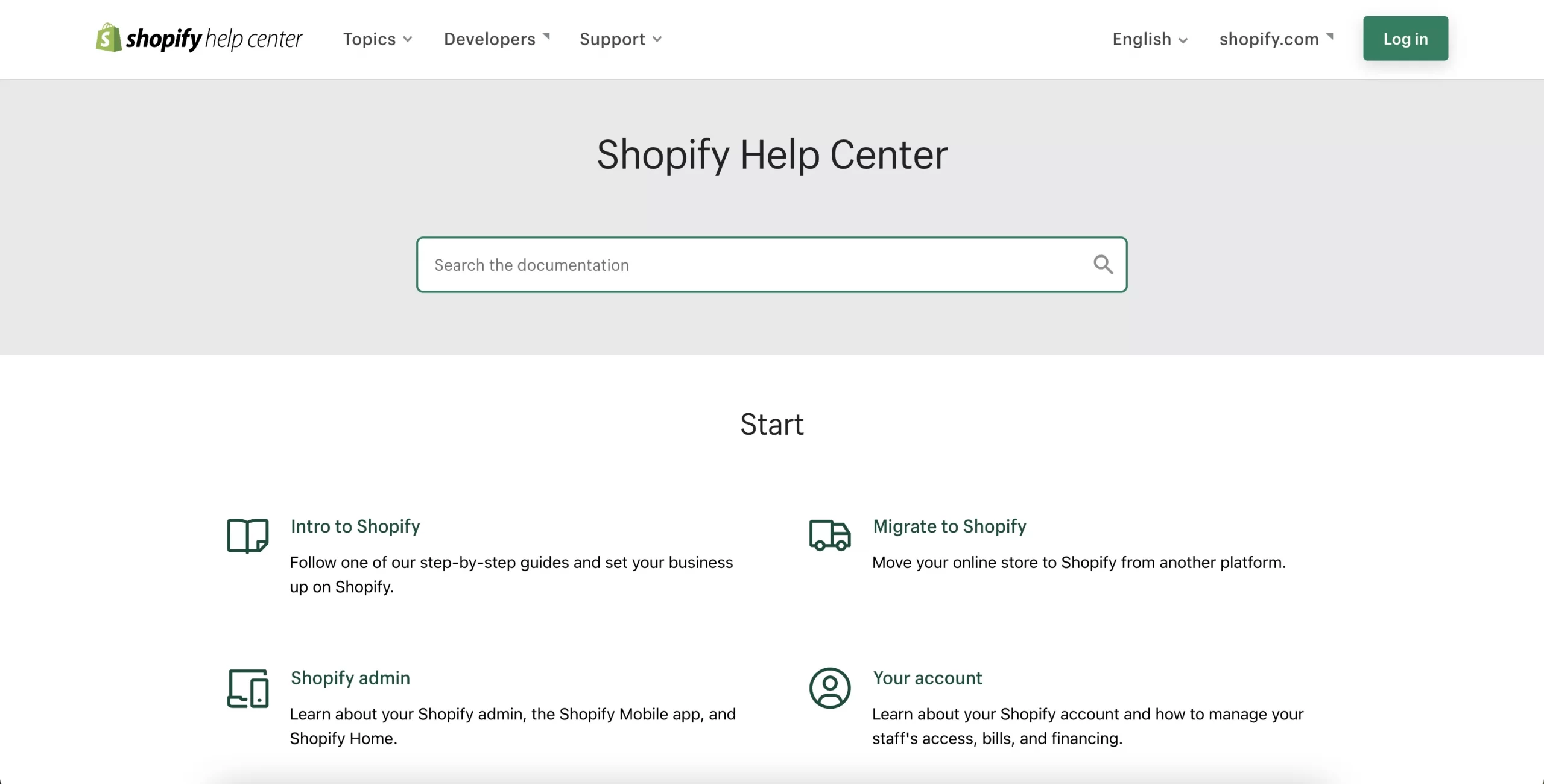
Users can either get assistance from experts or exchange experiences with other worldwide merchants via Shopify Forum.
Wix support
Wix is famous for multiple lively instruction videos. Just hover your mouse over the editor’s question marks and wait for the small bubbles to appear. They can rapidly give answers to your common questions.
About live support, you can submit tickets and request a callback on Wix. English support line is always available, but with other languages, such as French, German, Italian, Japanese, Portuguese, Russian, and Spanish, the line is available during business hours only.
#12. Best for Security: A tie
Both Wix vs Shopify are SaaS platforms, which means they will help you do all the security work. Below is a comparison and analysis support of these two platforms.
Quick verdict
It's a draw since we hardly find any difference between Wix and Shopify in security functions.
Shopify Security
Thanks to its hosted platform nature, Shopify completely takes care of updates and security issues in the background. The Shopify system also runs on a Level 1 PCI-compliant server, which is mandatory to accept credit or debit card info. SSL encryption (at 156-bit) is available for every Shopify site, too, which can keep your visitors’ data safe.
Moreover, Shopify also provides merchants with SOC (Service Organization Control) reports and Transparency reports, which are an assessment of a company’s information systems by third-party auditors.
Wix Security
While using Wix, users are assured of the high quality of security built into every Wix website. Merchants can gain customers’ trust by using SSL web security to keep connections secure and private over an HTTPS connection.
Plus, running on Level 1 PCI Compliant and TLS 1.2 (Transport Layer Security) means that your website reaches the highest level of payment standards, keeping your visitor transactions totally safe.
Besides, Wix experts have gone through extensive hacker testing to ensure your website is always up and running with DDoS Protection – a reliable web hosting.
Read more here to get to know more about Wix's multi-layered website security.
Wix vs Shopify – All Pros and Cons Revealed & Is Wix Better than Shopify?
The comparison between Wix vs Shopify is obviously hard to end up with an answer to “Is Wix or Shopify better?”
To summarize my thoughts, Wix is more suitable for those who wish to build a “general-purpose” website because of its price, ease of use, SEO features, and wide range of templates. Or if you have business in booking or appointments, Wix is definitely a good choice.
Wix Pros | Wix Cons |
|
|
Shopify excels in terms of eCommerce functions with its fully responsive designs, support for AMP (Accelerated Mobile Pages) product pages, multi-currency selling functionality, and seamless integrations with other key apps. These features make it a compelling choice for any merchant aiming to create a professional and effective online store.
Shopify Pros | Shopify Cons |
|
|
Our Methodology: How Did We Assess Wix and Shopify?
To provide a comprehensive and fair evaluation, we conducted a rigorous assessment of Wix and Shopify across key criteria vital to eCommerce success. Each criterion was weighted based on its importance to different types of businesses and users.
Criteria and weighting:
- Pricing (15%): Monthly plans, transaction fees, and value for money.
- Ease of Customization (10%): Flexibility of design tools, coding options, and template modification.
- Themes & Templates (10%): Quantity, quality, design variety, industry-specific options.
- Ecommerce Features (20%): Inventory management, product options, payment gateways, shipping options.
- In-person Selling (POS) (5%): Hardware integration, offline transaction support, mobile POS features.
- Apps Store (10%): Variety of extensions, quality of apps.
- SEO & Marketing (10%): Built-in SEO tools, marketing integrations, and email marketing features.
- Multilingual Capabilities (5%): Support for multiple languages, currency conversion, and regional settings.
- Platform Capacity & Limitations (5%): Scalability, product limits, and bandwidth restrictions.
- Loading Speed (5%): Impact on user experience, SEO ranking, and conversion rates.
- Customer Support (5%): Responsiveness, knowledge base, community forums, and access to experts.
- Security (5%): SSL certificates, PCI compliance, fraud protection measures.
Disclaimer:
Our assessment is based on thorough research and testing, but individual experiences may vary. We encourage you to consider your specific needs and priorities when choosing a platform – Wix or Shopify.
Wix vs Shopify – FAQs
Is it better to use Wix or Shopify?
Depending on your specific needs and requirements, the answer will differ:
+ You go for Wix if you need a beautifully-designed website with basic eCommerce functions and analytics.
+ You go for Shopify if you want so scale up your eCommerce business with data-driven analytics and reports.
Is Wix good for an eCommerce website?
Yes, Wix is good especially for smaller businesses or those starting. It offers a range of eCommerce features but might not be the best for rapid growth or advanced functionalities.
Is it hard to switch from Wix to Shopify?
Yes, it can be difficult to switch from Wix to Shopify and migrate product data, customer information, and content. This process can be time-consuming and may require manual adjustments. However, you can opt for our Wix to Shopify migration service for a hassle-free experience.
What is better than Shopify?
Some Shopify alternatives may include:
BigCommerce has a strong B2B and wholesale focus.
Magento is a highly customizable but complex platform.
WooCommerce is WordPress-based and good for content-heavy stores.
Squarespace is user-friendly and design-focused, with decent eCommerce features.
What can Shopify do that Wix can't?
Shopify supports unlimited product listings with extensive variants, more advanced inventory management tools, and in-depth sales analytics across multiple sales channels. Plus, its app ecosystem boasts over 13,000 options, which far surpasses Wix's modest 800+.
Can Wix handle eCommerce?
Yes, Wix can handle eCommerce effectively if you are a smaller or mid-sized business. It's a great platform for beginners or anyone looking to create a visually appealing online store without needing advanced technical skills.
Final Words
Thank you for keeping up with this Wix vs Shopify for eCommerce comparison at this length.
LitExtension – #1 Shopping Cart Migration Expert hopes that this Wix vs Shopify comparison has helped you to get to know both platforms and, at some point, you could make up your mind about which platform you’ll be settling with in the future. You can always find out more interesting insights about eCommerce via Ecommerce Platform Section.
Should you have any concerns, don’t hesitate to leave us a message or join our Facebook community. We’re happy to help.

